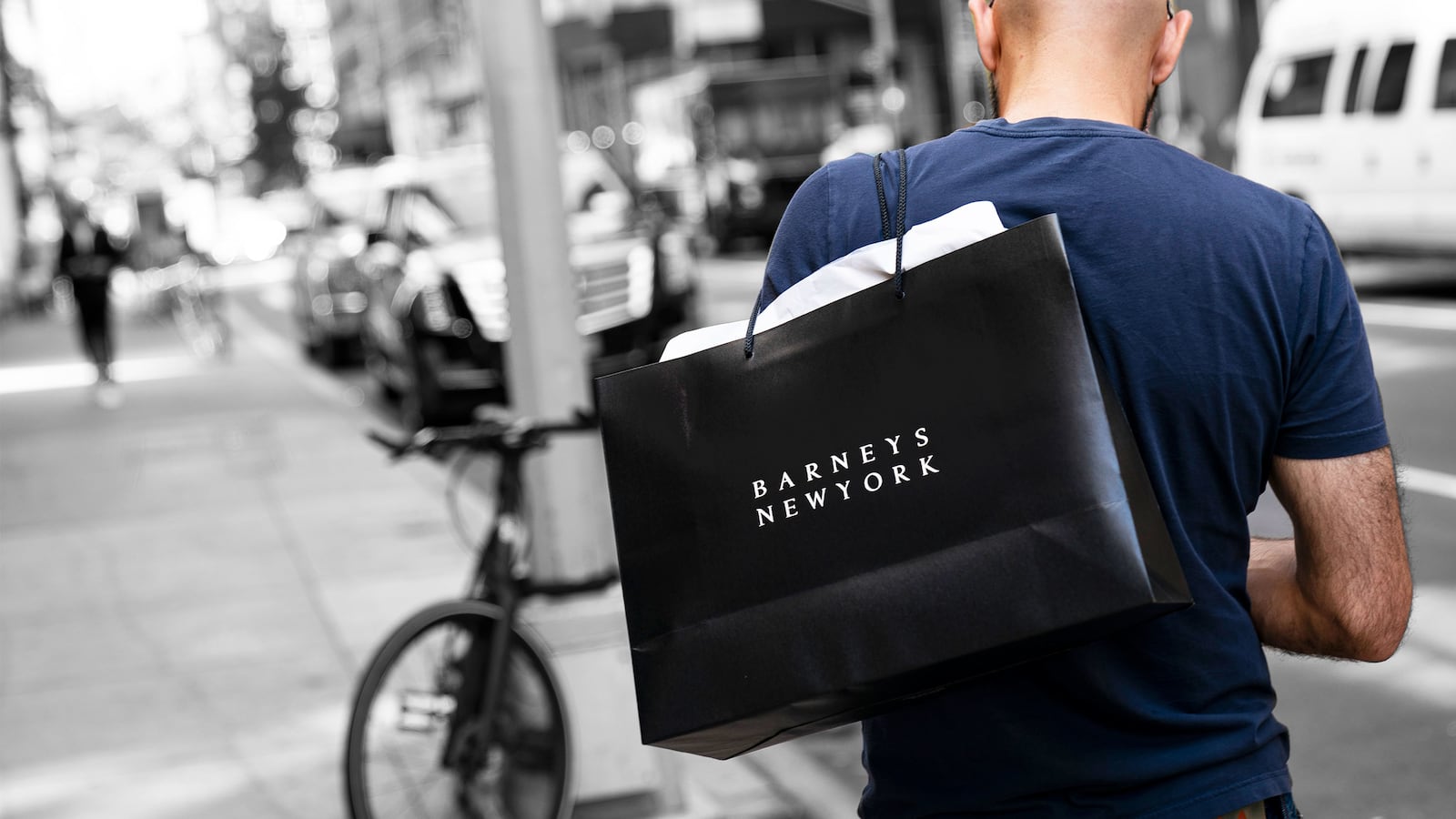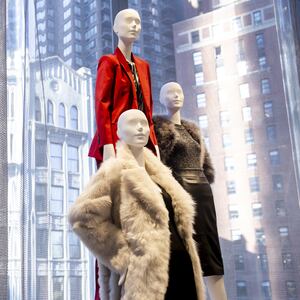No one camped outside of Barneys overnight to be the first inside the famed department store’s Madison Avenue flagship when its first round of closing discounts began on Monday.
Unlike lesser retailers, there would be no shoving matches over discounted purses or heels. A peek inside Barneys showed how the Upper East Side does going-out-of-business sales; namely, it doesn’t.
As The New York Times reported last week, Barneys was sold to Authentic Brands, which owns names like Juicy Couture, Frye, and Nautica, for $271 million. Save for the flagship, which will remain open as a “pop-up retail experience” showcasing “entertainment that fosters creativity and community” (whatever that means), Barneys stores will close.
But before that, in what is becoming a sad tradition, there will be liquidation sales. The Times reported that Barney’s will begin a secret round of discounts for “loyal” shoppers, and speculated that bigger blowouts for the rest of us could come just in time for the holiday shopping season. For now, the price of all stock, like $1,000 poplin blouses from The Row or metallic Louboutin stilettos, is reduced—barely—5 to 10 percent.
Representatives for Barneys and Authentic Brands did not respond to The Daily Beast’s request for comment.
Salespeople in both the Madison Avenue flagship and the downtown location on Seventh Avenue did not seem to know how much longer they would have jobs. (Barneys currently employs around 2,000 people.)
“They don’t tell us anything,” one said. “I’ve been mentally checked out for a while, about a year now.”
Inside the understated Madison Avenue store, there were a few empty shelves, especially in the accessories section on Monday morning. “Of course the bag I want is not on sale,” one native New Yorker who did not want to be named told The Daily Beast, as she poked around a tan leather tote.
On some floors, mannequins outnumbered humans, which made the space a welcome respite from the busy streets outside but did not say much for the store’s popularity. “Everything is so sad here, the atmosphere and energy is so quiet,” another longtime shopper said. “It used to be so vibrant.” A few feet away, a man who had just bought a jacket hugged his salesperson goodbye.
One man, Brian Angiolet, had come to Barneys to return a jacket his girlfriend had bought him as a gift. “I usually come here to get gifts because they have amazing stuff, and a gift from here has a little something to it. A team of people always swarms in to help you if you come in here shopping for someone special.”
Angiolet added, “I’m bummed out that [the grocery store] Dean and DeLuca closed, and this is closing. Everything I love. I worry about the mall-ification of New York.”
Pamela Posner, who calls herself a “longtime Barney’s girl,” got a group of friends together for lunch at Freds, the store’s restaurant, to mourn the loss of her “happy place.”
“I was probably 16 when I first came here,” Posner said. “I’m in denial that it’s closing. I used to work across the street and I’d come here on my lunch break. Half of my wardrobe is from here. The only other store, I guess, that appeals to me is Bergdorf.”
Though Posner did not know what to expect from the nebulous-sounding “experiential” next life of Barneys-the-pop-up, she’s open to visiting when it eventually opens. “I want to bring my children here so they understand what it once was,” Posner said.
One vendor who owns a fashion label, but did not want her name to be used, has sold her products in Barneys for fifteen years. She believes the retailer, once synonymous with a quiet kind of Manhattan chic, lost its point of view and became too homogeneous with other department stores.
“There’s no novelty, no interesting experience anymore,” the vendor said. “Barneys buyers dared to take the time to go and find artisans in Europe and Japan, but now it carries the same brands everyone else has. They don’t need to come here, they can stay at home and Google to find what they need.”
Authentic Groups plans to set Barneys pop-ups inside its former competitor, Saks’ Fifth Avenue. Those small boutiques could be a chance for Barneys to regain its cool factor.
“Barneys is known for introducing emerging brands into the U.S. luxury space,” said Jay Hakami, president and CEO of retail analytics at the consultancy firm Skypad. “By evolving into a pop-up and a store-within-a-store, as they plan to do with Saks, Barneys is still able to maintain its brand recognition, as well as focus more on emerging luxury brands in a smaller real estate format, without the competition of other department stores.”
That is, as long as Barneys can give shoppers something totally unique again. “Pop-ups work for high-end places only if the products sold there do not compete with the same merchandise that can be found at a nearby department store,” Hakami added.
At Barneys’ downtown post on Seventh Avenue, one shopper, Stephen Sprigs, came in on a mission: to use his gift card before it expires in three days.
He also paused for some nostalgia: “This was my first credit card, when I moved to the city,” Sprigs said. “Back in the ’80s and ’90s, you could splurge and it would be a week’s paycheck. Now you have to pay $1,000 for a little sweater. There’s a jacket I want, but it’s $2,600. I’d wait for the sale, but I can’t do that now.”
Inside both New York locations, Barneys felt like the scene of a wake. Staff and clients mourned the store together, accompanying each mention of “Authentic Brands” with an eye roll. Some swapped phone numbers, so they could keep in touch after potential layoffs.
When a salesperson asked one man if he needed help finding anything, he quipped back, “Yes, where do you sell the time machines?”







